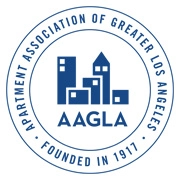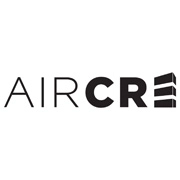The Impact of Homeownership Rates on the Los Angeles Rental Market

Famous for its warm weather, dynamic economy and rich culture, Los Angeles has long been one of the most desirable places to live in the US. However, with house prices continuing to rise across the nation, the prospect of homeownership in LA can seem unattainable to many buyers.
Some reports suggest the housing market in LA may be among the least affordable in the entire country, with the median listing home price in the city now totalling almost $1 million (equating to a 30% increase in just 5 years), though not everybody in LA is looking to become a homeowner.
Provided the supply of affordable rental units is sufficient to meet expected demands, the rental market in LA can be stabilized; still, homeownership rates must also be considered. To explore this further, let’s look into the impact of homeownership rates on the Los Angeles rental market.
Homeownership Rates in LA
Recently published figures help to illustrate how the current housing market in LA functions. By analyzing homeownership rates by state and city, it becomes clear that rental units account for a significant portion of occupied homes in Los Angeles. State figures indicate an almost equal separation, with owner-occupied housing at 55.5% and renter-occupied housing totalling 44.5%.
This suggests that residents of California are the third least likely state occupants to own their own homes, behind only residents of New York and Washington, D.C. Figures pertaining to LA reveal a significantly wider gap than the state average, with owner-occupied homes estimated to account for around 37% of the total market, compared to tenant-occupied homes equalling 63%.
How Do Homeownership Rates Impact the Rental Market?
In theory, the more rental units available to prospective tenants, the more competitive the rental market will be. However, this outcome is also heavily dependent on which entities own the units within the rental market. A wider variety of independent landlords will typically contribute to a more competitive market, but less varied corporate landlords can impact the affordability of rent.
In terms of the LA rental market, figures published in 2021 reveal corporate investment vehicles now own over 43% of all available rental units in the city, with corporate landlords estimated to own an average of twelves times as many units as independent landlords do. In addition, trusts (entities owning over four units and following similar investment patterns to corporate landlords) were found to own 23% of all available rental units, further impacting the affordability of rentals.
In short, though lower homeownership rates can help to facilitate a greater deal of competition in the rental market, an increase in available rental properties does not always equate to lower prices. In many cases, larger numbers of corporate landlords can contribute to rent increases.
Rental Market Trends in Los Angeles
To fully illustrate the impact of homeownership rates and related factors on the Los Angeles rental market, it’s important to observe rental market trends in the area over time. Currently, the average rent in LA sits at around $2,700, significantly higher than the national average of $1,702.
Reports published within the last 5 years reveal that the average rent in Los Angeles has risen significantly more than the national average; LA prices have increased by 65% over a ten year period, compared to a national average rent increase of just 36%. However, recently published figures suggest rent prices in LA may be falling faster than the national average, decreasing by 3% between 2022-2023 compared to national figures depicting a drop of around 1% in value.
These recent figures may represent good news for existing Los Angeles tenants, but decreasing rent costs can only be beneficial to new tenants if the supply of affordable rental units meets the current demand. So, are affordable rental properties being introduced to the LA rental market?
The Availability of Rental Properties in LA
Efforts have been made to increase the number of affordable LA rental properties available to tenants in recent years. Figures published in 2019 reveal approval rates for new affordable rental developments increased by as much as 106%, with the Los Angeles Housing Department committed to maintaining this rate via projects like the Affordable Housing Managed Pipeline.
At present, there is a rental vacancy rate of 3.3% among Los Angeles residents from a total number of almost 1.46 million rental units, equalling almost 50,000 available homes. In addition, the population of LA has declined by around 160,000 in recent years, potentially contributing to a larger number of LA rental properties becoming available to prospective tenants. This data could indicate an attractive future for the Los Angeles rental market in terms of unit availability.
In Summary
Just like housing markets in many popular cities across the US, the LA housing market has experienced some degree of turbulence in recent years. With house prices rising significantly across the entire nation, homeownership rates among younger residents have been in decline.
These developments, among other factors, may have contributed to the LA housing market becoming weighted towards renter-occupied homes, but lower homeownership rates alone do not always lead to a more competitive market. Ultimately, factors like the balance between independent and corporate landlords will impact average rent values, though recent figures suggest the LA rental market may become increasingly attractive to tenants in the near future.








